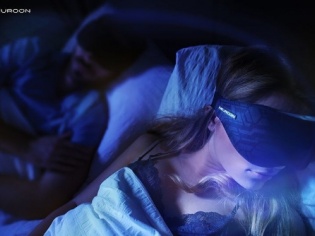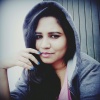-
Saumya Soman
11:04 01st Jun, 2016
Forget Dreamcatchers, An App For Controlled Dreaming! | TechTree.com
Forget Dreamcatchers, An App For Controlled Dreaming!
Working on the lucid dreaming feature was first announced by Inteliclinic, inventor of the Neuroon during their Kickstarter campaign two years ago.

Have you ever abruptly woken up from a beautiful dream, looked dazed and forced yourself to sleep again in the hope of continuing that dream again? We have all, at some point in our lives, wondered what those dreams meant and spent a good part of the day trying to recollect it. Dreams, be it any kind, are fascinating and since the beginning of time, mankind has been in the pursuit to understand and interpret dreams. From Alice in Wonderland to Freudian theories to Christopher Nolan’s Inception, dreams have never ceased to capture our fancy.
With the new age interest and research in in lucid dreaming Neuroon, an intelligent sleep mask that can monitor and analyze users' sleep and enhance its quality will soon add a new feature for lucid dream induction. This function combined with a brand new mobile app will change the way we think about our dreams and interact with them.
Lucid dreaming is a state in which the person is aware that he or she is dreaming. Being aware while in a state of sleep and therefore able to consciously influence the content of your dream is what the new Neuroon feature claims. (It’s impossible not to think of Matrix at this point!)
The scientific evidence on lucid dreaming came out of Hull University in the UK in 1975, when Dr Keith Hearne recorded the predetermined eye movements of his lucid dreaming patient during the REM phase of sleep. Since then ongoing neuroscience discoveries have strengthened researchers' beliefs that lucid dreaming can no longer be thought of as just a fantasy in a movie script.
Neuroon, a device that is the result of current trends in neuroscience, is the first product on the consumer market that can automatically analyze human sleep by monitoring brain signals and improve sleep with light therapy. Lucid dreams may occur rarely spontaneously or they can be induced by specific techniques divided into two groups: behavioral techniques and external stimuli. The Neuroon's ability to detect REM sleep precisely, allows it to start implementing external stimuli techniques into the mask and induce lucid dreaming while the person is in the REM phase of sleep. Currently, the Neuroon is the most advanced system on the market due to its built-in professional sleep tracker and artificial algorithmic methods for performance improvement.
The Neuroon Lucid Dreaming feature will consist of two parts: behavioral techniques and external stimuli. Both are based on the research conducted by Heidelberg University in Germany and the University of Bern in Switzerland among others. Behavioral techniques aim at preparing the user's mind to start lucid dreaming while external stimuli are a direct influence of the mask on the user's REM sleep with the help of light, vibration and acoustic stimulus. Only with both of these methods can lucid dreaming be fully experienced.
Working on the lucid dreaming feature was first announced by Inteliclinic, inventor of the Neuroon during their Kickstarter campaign two years ago. The idea was given a very positive reception; so after finishing the final version of the Neuroon, Inteliclinic's, developers focused on this new function.
The Lucid Dreaming App for Neuroon will be available from August and will only work in its full potential with the Neuroon mask.
Read our previous news article on Neuroon
http://www.techtree.com/content/news/10392/new-wearable-device-helps-beat-jet-lag.html
TAGS: Neuroon, Kickstarter, Mobile App
- DRIFE Begins Operations in Namma Bengaluru
- Sevenaire launches ‘NEPTUNE’ – 24W Portable Speaker with RGB LED Lights
- Inbase launches ‘Urban Q1 Pro’ TWS Earbuds with Smart Touch control in India
- Airtel announces Rs 6000 cashback on purchase of smartphones from leading brands
- 78% of Indians are saving to spend during the festive season and 72% will splurge on gadgets & electronics
- 5 Tips For Buying A TV This Festive Season
- Facebook launches its largest creator education program in India
- 5 educational tech toys for young and aspiring engineers
- Mid-range smartphones emerge as customer favourites this festive season, reveals Amazon survey
- COLORFUL Launches Onebot M24A1 AIO PC for Professionals







TECHTREE